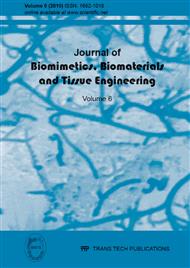[1]
Z. Huda, K.W. Shi and R. Bulpett: Failure Analysis of a Steel Motor-Cycle Kick-Stand, Journal of Failure Analysis and Prevention, (ASM International), (2009) Article in Press.
Google Scholar
[2]
M. Roe, A.A. Torrance: Tribology International, Vol. 41(11 ) (2008) pp.1102-1008.
Google Scholar
[3]
G. Zhou, X. Li, Y. Yaowu Shi, B. Chang: Engineering Failure Analysis, Vol. 13(4) (2006) pp.606-614.
Google Scholar
[4]
P.P. Pavoor et al.: Biomaterials, Vol. 27(8) (2006) pp.1527-1533.
Google Scholar
[5]
D.R. Askeland and P.P. Phule: The Science and Engineering of Materials, Thomson Books/Cole, California, USA (2003).
Google Scholar
[6]
M.M. Goudarzi, S.A.J. Jahromi and A. Nazarboland: Materials & Design Vol. 30(6) (2009) pp.2283-2288.
Google Scholar
[7]
K. Lapper, M. James, J. Chashechkina, D.A. Rigney: Wear Vol. 203-204 (1997) pp.46-56.
DOI: 10.1016/s0043-1648(96)07475-3
Google Scholar
[8]
D.A. Rigney: Fundamentals of Friction and Wear of Materials, American Society for Metals, Metals Park, OH (1981) pp.43-69.
Google Scholar
[9]
A. Zeren, E. Feyzullahoylu, M. Zeren: Materials and Design, Vol. 28 (2007) pp.318-23.
Google Scholar
[10]
G.C. Pratt: Materials for plain bearings, Int Metall Rev, Vol. 8 (1973) pp.62-68.
Google Scholar
[11]
R. Kingsbury, Metals Handbook, 9th Ed., Vol. 3. Metals Park, OH: ASM International (1980) pp.802-822.
Google Scholar
[12]
E. Booser, M. Khorasani: Applied Tribology Bearing Design and Lubrication, John Wiley, New York, (2001).
Google Scholar
[13]
B. Ramamurt: J. Arthroplasty, Vol. 11 (1996) pp.852-855.
Google Scholar
[14]
A. Wang: Wear, Vol. 203-204 (1997) pp.230-241.
Google Scholar
[15]
D. Bennett, J. Orr, R. Baker: J. Arthroplasty, Vol. 15 (2000) pp.909-915.
Google Scholar
[16]
A. Wang: Wear, Vol. 248 (2001) pp.38-47.
Google Scholar
[17]
M. Turell, A. Wang, A. Bellare: Wear, Vol. 255 (2003) pp.1034-1039.
Google Scholar
[18]
B.T.K. Barry, C.J. Thwaites: Tin and its Alloys and Compounds: Ellis Wood, UK, (1983).
Google Scholar
[19]
T.B. Massalski: Binary Alloy Phase Diagrams. Metals Park, OH: American Society for Metals, USA (1982).
Google Scholar
[20]
Williams, D.F. (Editor): Biocompatability of Orthopedic Implants, Vol. 1, Franklin Book Company, PA, USA (1982).
Google Scholar
[21]
Gibbons, D.F., in: Materials for Orthopedic Joint Prostheses, edited by D.F. Williams, volume 1 of Biocompatability of Orthopedic Implants, chapter 4, Franklin Book Company, PA, USA (1982).
Google Scholar
[22]
M.N. Helmus, D.F. Gibbons, and D. Cebon: Toxicologic Pathology, Vol. 36(1) (2008) pp.70-80.
Google Scholar
[23]
T. Hryniewicz, R. Rockiki, and K. Rokosz: Corrosion, Vol. 64(8) (2008) pp.660-665.
Google Scholar
[24]
W.D. Calister Jr., Materials Science and Engineering: An Introduction, John Wiley & Sons, New York, USA (2003).
Google Scholar
[25]
H. Heisel et al.: J Bone Joint Surg-Am Vol. 85-A (2003) pp.1366-79.
Google Scholar
[26]
S.M. Kurtz et al.: Biomaterials, Vol. 20 (1999) pp.1659-1688.
Google Scholar
[27]
L. Savarino et al.: J Biomed Mater Res (Ap. l Biomater) Vol. 63 (2002) pp.467-474.
Google Scholar
[28]
E. Ingham and J. Fisher: Proc. Inst. Mech. Eng. Part H-J. Eng. Med Vol. 214 (H1) (2000) pp.21-37.
Google Scholar
[29]
P.A. Dearnley, Proc. Inst. Mech. Eng. Part H-J. Eng. Med., Vol. 213 (H ) (1999) pp.107-135.
Google Scholar
[30]
R. Hauert,: Diamond Relat Mater, Vol. 12 (2003) pp.583-589.
Google Scholar
[31]
F. Platon, P. Fournier and S. Rouxel: Wear Vol. 250 (2001) pp.227-236.
Google Scholar
[32]
V. Saikko et al.: Biomaterials, Vol. 22 (2001) pp.1507-1514.
Google Scholar
[33]
M. Kiuru et al.: J. Biomed. Mater. Res. Part B: Appl Biomater, Vol. 66B (2003) pp.425-428.
Google Scholar
[34]
J.I. Onate, Surf Coat Technol, Vol. 142-144 (2001) pp.1056-1062.
Google Scholar
[35]
R. Lappalainen et al.: J. Biomed. Mater. Res. Part B: Appl. Biomater. Vol. 66B (2003) pp.410-413.
Google Scholar


